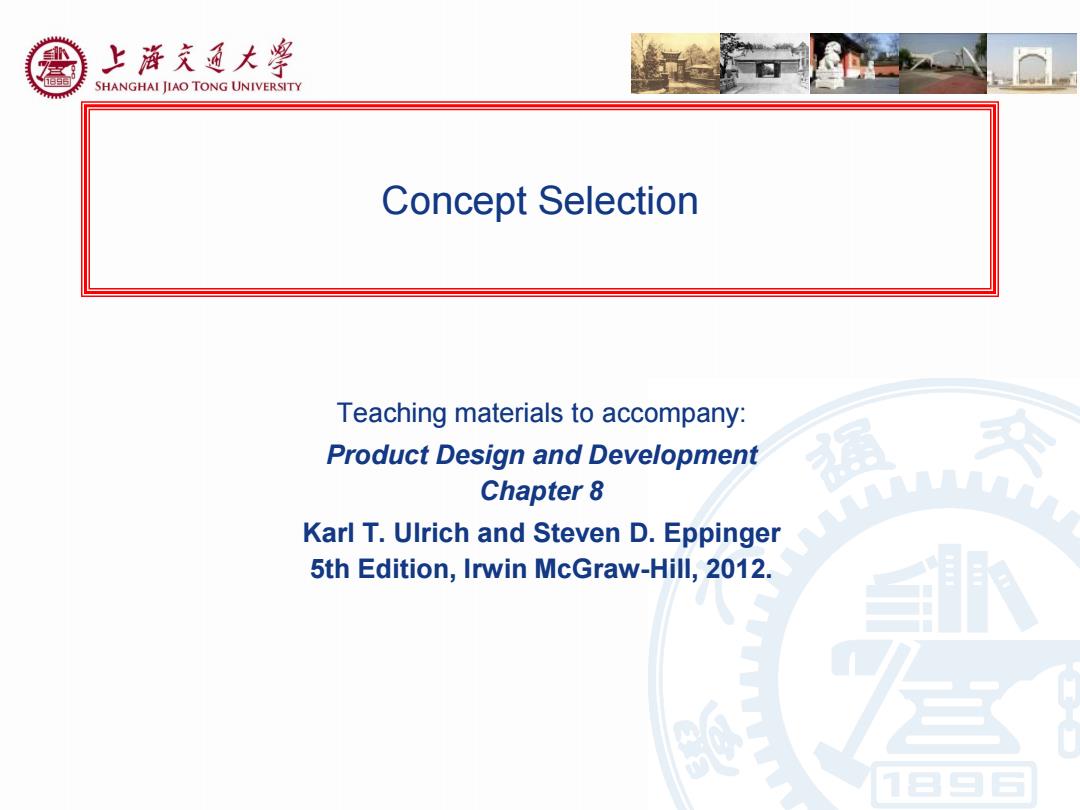
上游充通大学 SHANGHAI JIAO TONG UNIVERSITY Concept Selection Teaching materials to accompany: Product Design and Development Chapter 8 Karl T.Ulrich and Steven D.Eppinger 5th Edition,Irwin McGraw-Hill,2012
Concept Selection Teaching materials to accompany: Product Design and Development Chapter 8 Karl T. Ulrich and Steven D. Eppinger 5th Edition, Irwin McGraw-Hill, 2012
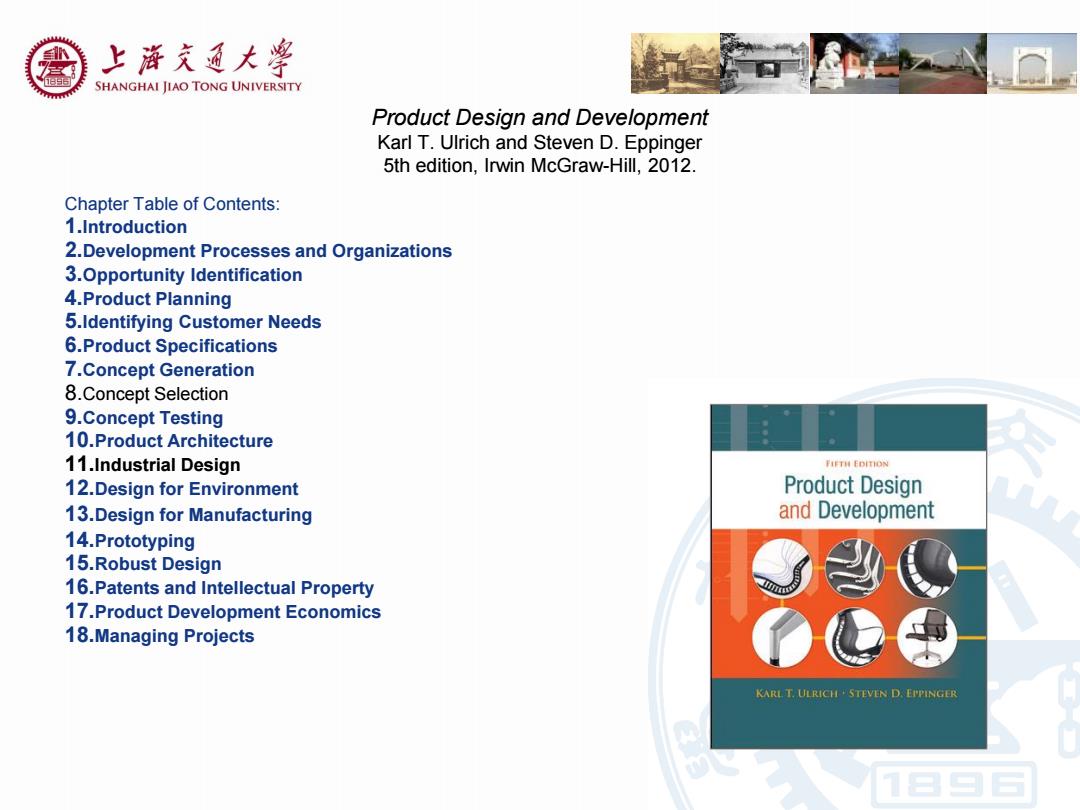
上游充通大 SHANGHAI JIAO TONG UNIVERSITY Product Design and Development Karl T.Ulrich and Steven D.Eppinger 5th edition,Irwin McGraw-Hill,2012. Chapter Table of Contents: 1.Introduction 2.Development Processes and Organizations 3.Opportunity Identification 4.Product Planning 5.Identifying Customer Needs 6.Product Specifications 7.Concept Generation 8.Concept Selection 9.Concept Testing 10.Product Architecture 11.Industrial Design FIFTH EDITION 12.Design for Environment Product Design 13.Design for Manufacturing and Development 14.Prototyping 15.Robust Design 16.Patents and Intellectual Property 17.Product Development Economics 18.Managing Projects KARL T.ULRICH STEVEN D.EPPINGER
Product Design and Development Karl T. Ulrich and Steven D. Eppinger 5th edition, Irwin McGraw-Hill, 2012. Chapter Table of Contents: 1.Introduction 2.Development Processes and Organizations 3.Opportunity Identification 4.Product Planning 5.Identifying Customer Needs 6.Product Specifications 7.Concept Generation 8.Concept Selection 9.Concept Testing 10.Product Architecture 11.Industrial Design 12.Design for Environment 13.Design for Manufacturing 14.Prototyping 15.Robust Design 16.Patents and Intellectual Property 17.Product Development Economics 18.Managing Projects
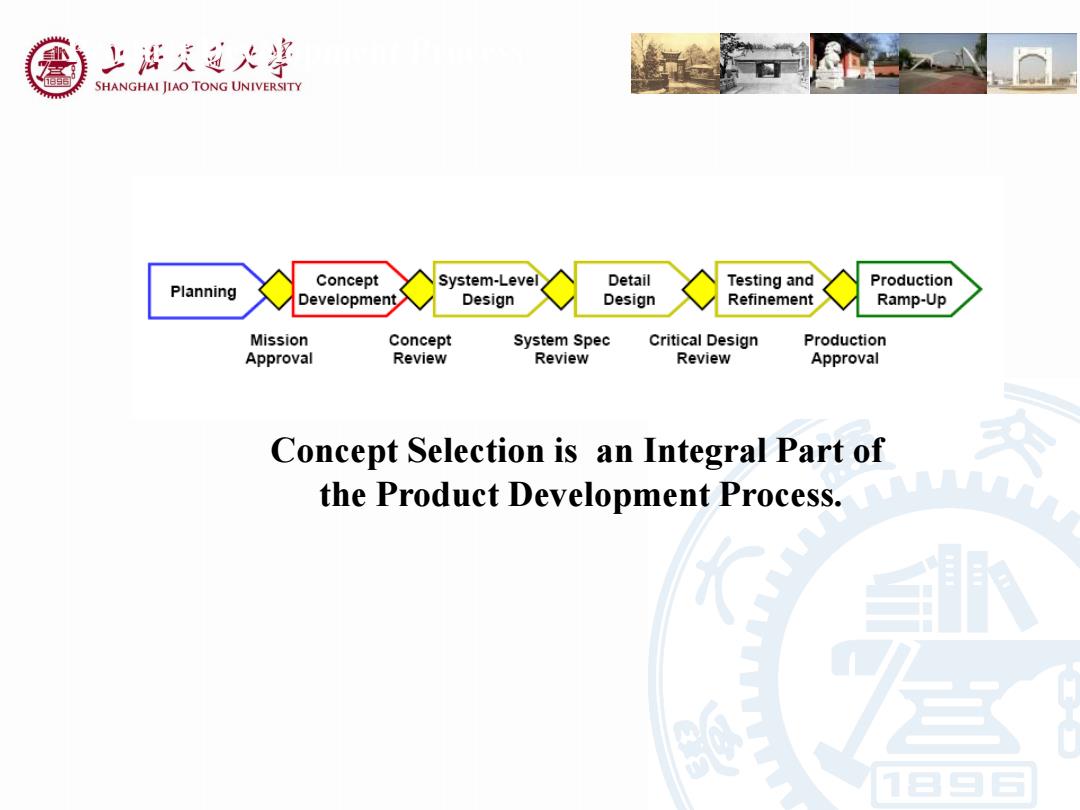
上游只过大粤 SHANGHAI JIAO TONG UNIVERSITY Concept System-Level Detail Testing and Production Planning Development Design Design Refinement Ramp-Up Mission Concept System Spec Critical Design Production Approval Review Review Review Approval Concept Selection is an Integral Part of the Product Development Process
Product Development Process Concept Selection is an Integral Part of the Product Development Process
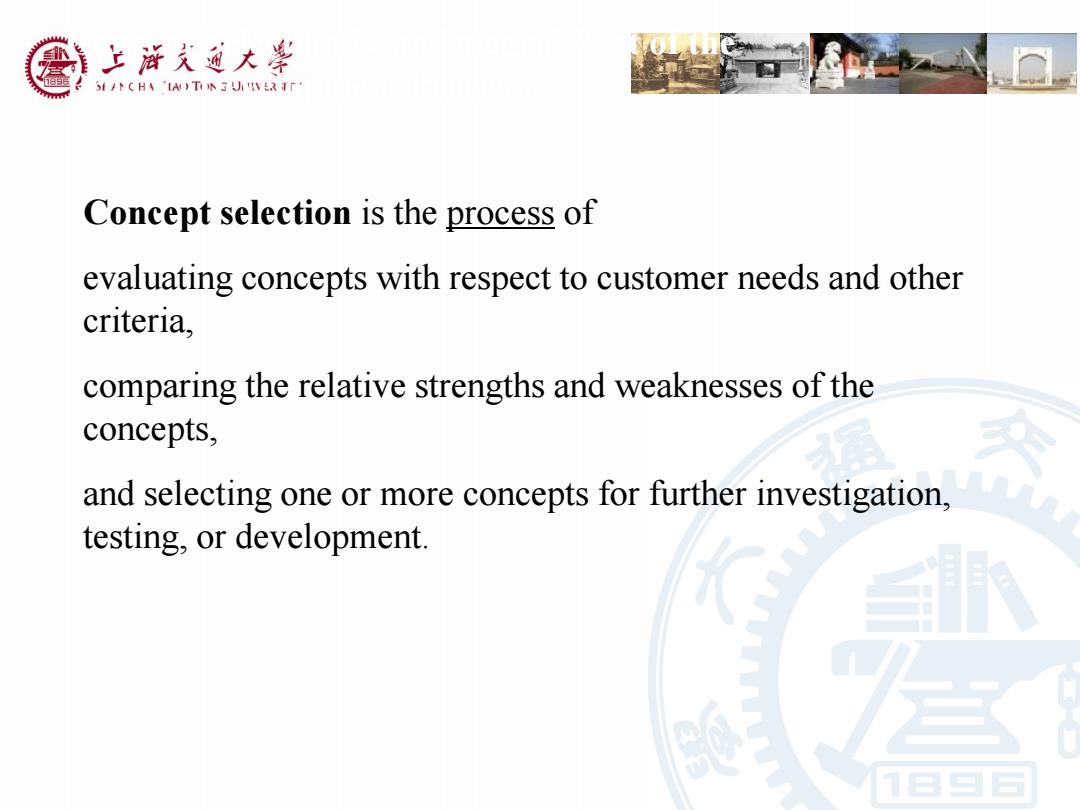
上浒天通大学 e SEANC HA'N)TN3UWER1广 Concept selection is the process of evaluating concepts with respect to customer needs and other criteria, comparing the relative strengths and weaknesses of the concepts, and selecting one or more concepts for further investigation, testing,or development
Concept Selection is an Integral Part of the Product Development Process. Concept selection is the process of evaluating concepts with respect to customer needs and other criteria, comparing the relative strengths and weaknesses of the concepts, and selecting one or more concepts for further investigation, testing, or development

上游充通大学 e SHANGHAI JIAO TONG UNIVERSITY Concept Development Process 1 Mission Development Statement Identify Establish Generate Select Test Set Plan Plan Customer Target Product Product Product Final Downstream Needs pecifications Concepts Concept(s) Concept(s) Specifications Development Perform Economic Analysis Benchmark Competitive Products Build and Test Models and Prototypes
Concept Development Process Perform Economic Analysis Benchmark Competitive Products Build and Test Models and Prototypes Identify Customer Needs Establish Target Specifications Generate Product Concepts Select Product Concept(s) Set Final Specifications Plan Downstream Development Mission Statement Test Product Concept(s) Development Plan
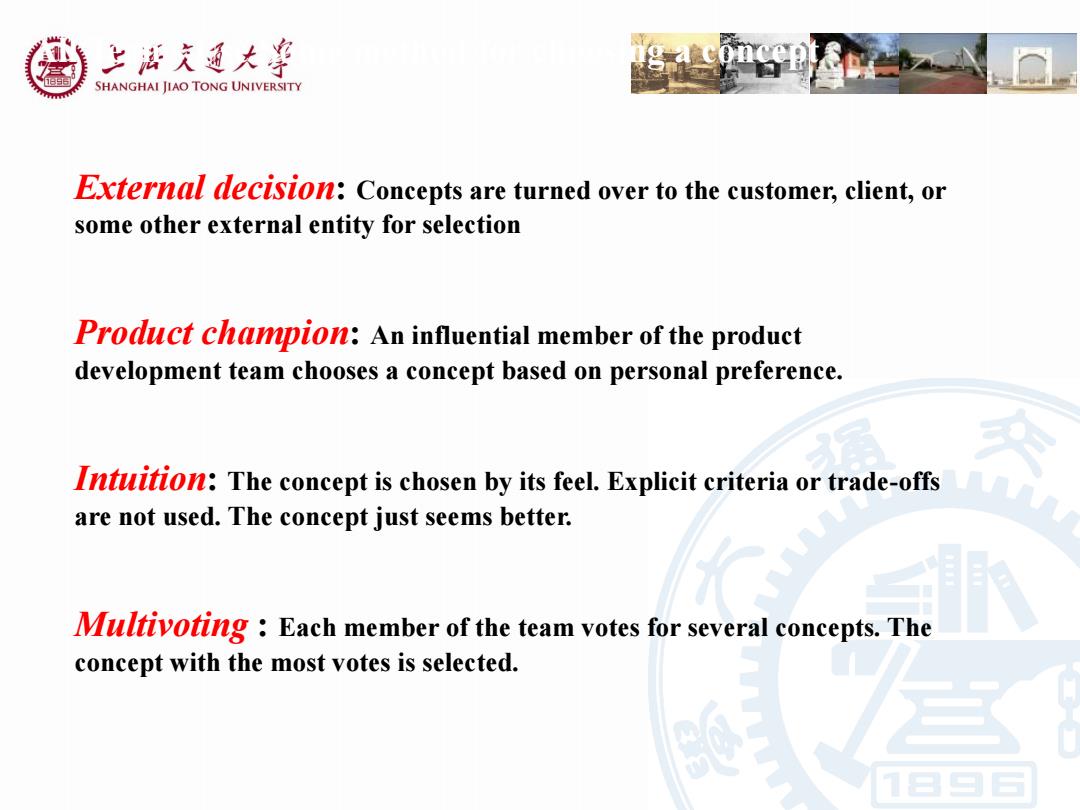
二活充通大¥ e SHANGHAI JIAO TONG UNIVERSITY External decision:Concepts are turned over to the customer,client,or some other external entity for selection Product champion:An influential member of the product development team chooses a concept based on personal preference. Intuition:The concept is chosen by its feel.Explicit criteria or trade-offs are not used.The concept just seems better. Multivoting Each member of the team votes for several concepts.The concept with the most votes is selected
All Teams Use Some method for choosing a concept External decision: Concepts are turned over to the customer, client, or some other external entity for selection Product champion: An influential member of the product development team chooses a concept based on personal preference. Intuition: The concept is chosen by its feel. Explicit criteria or trade-offs are not used. The concept just seems better. Multivoting : Each member of the team votes for several concepts. The concept with the most votes is selected
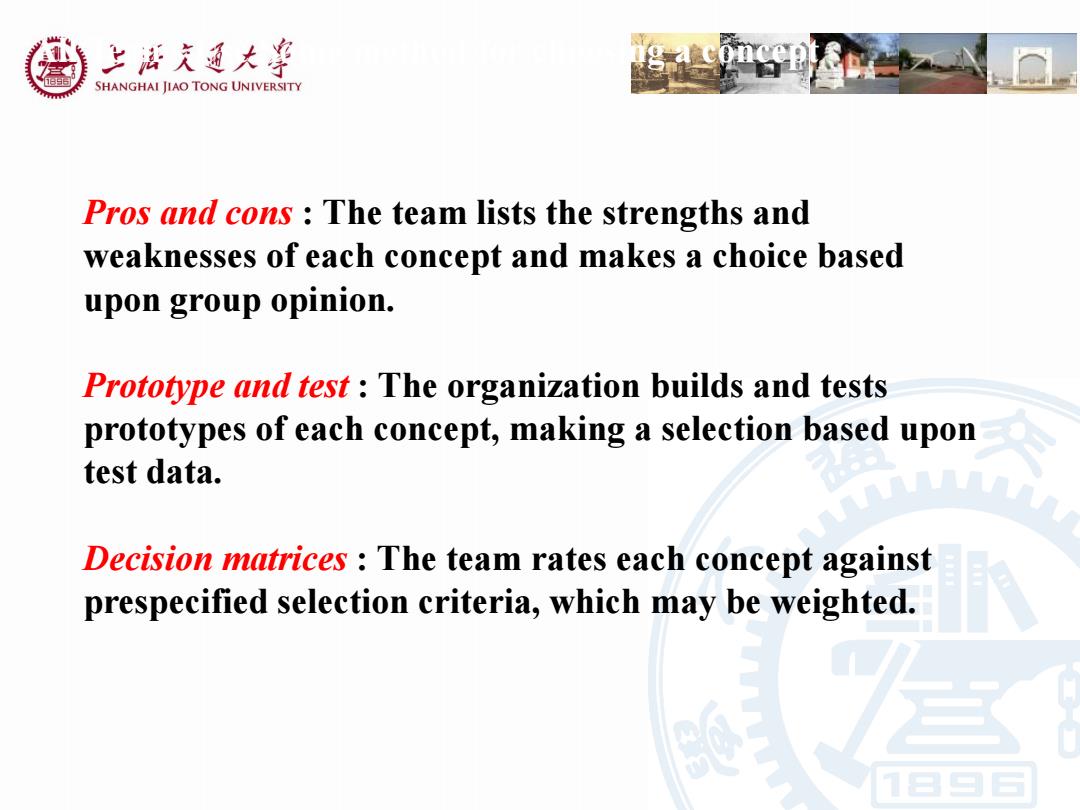
上活夫通大事 e SHANGHAI JIAO TONG UNIVERSITY Pros and cons The team lists the strengths and weaknesses of each concept and makes a choice based upon group opinion. Prototype and test The organization builds and tests prototypes of each concept,making a selection based upon test data. Decision matrices The team rates each concept against prespecified selection criteria,which may be weighted
Pros and cons : The team lists the strengths and weaknesses of each concept and makes a choice based upon group opinion. Prototype and test : The organization builds and tests prototypes of each concept, making a selection based upon test data. Decision matrices : The team rates each concept against prespecified selection criteria, which may be weighted. All Teams Use Some method for choosing a concept
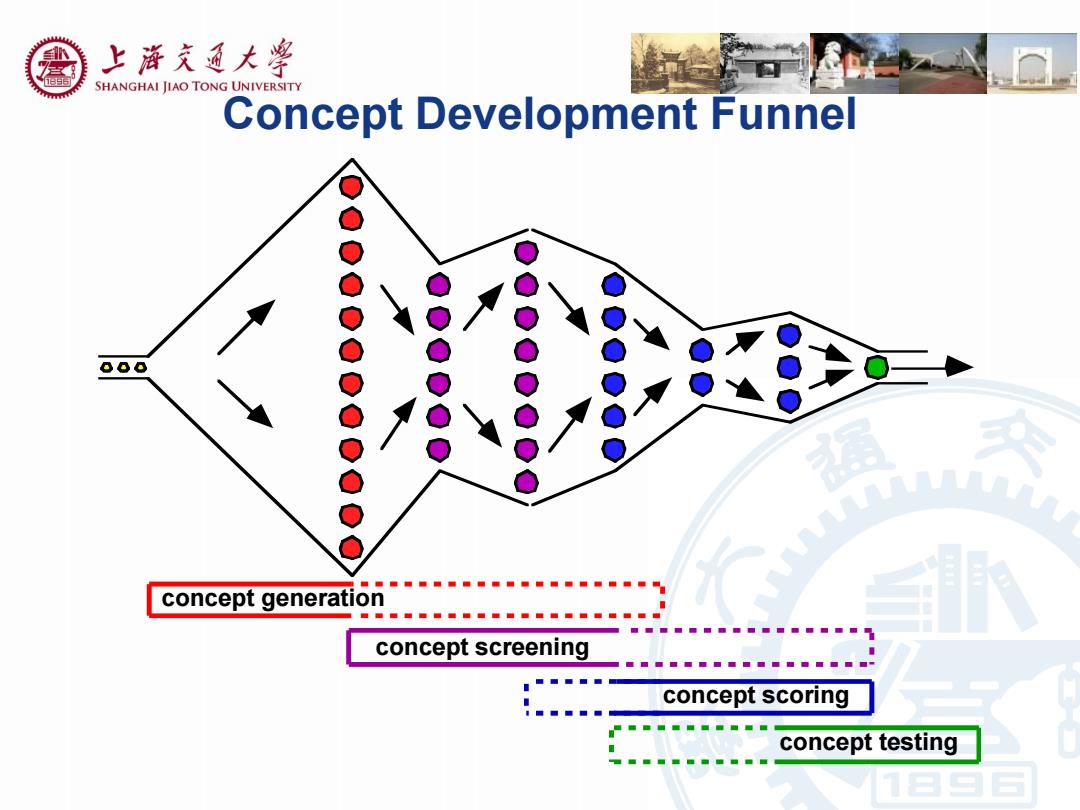
上游充通大 SHANGHAI JIAO TONG UNIVERSITY Concept Development Funnel 000 concept generation concept screening concept scoring concept testing
Concept Development Funnel concept generation concept screening concept scoring concept testing
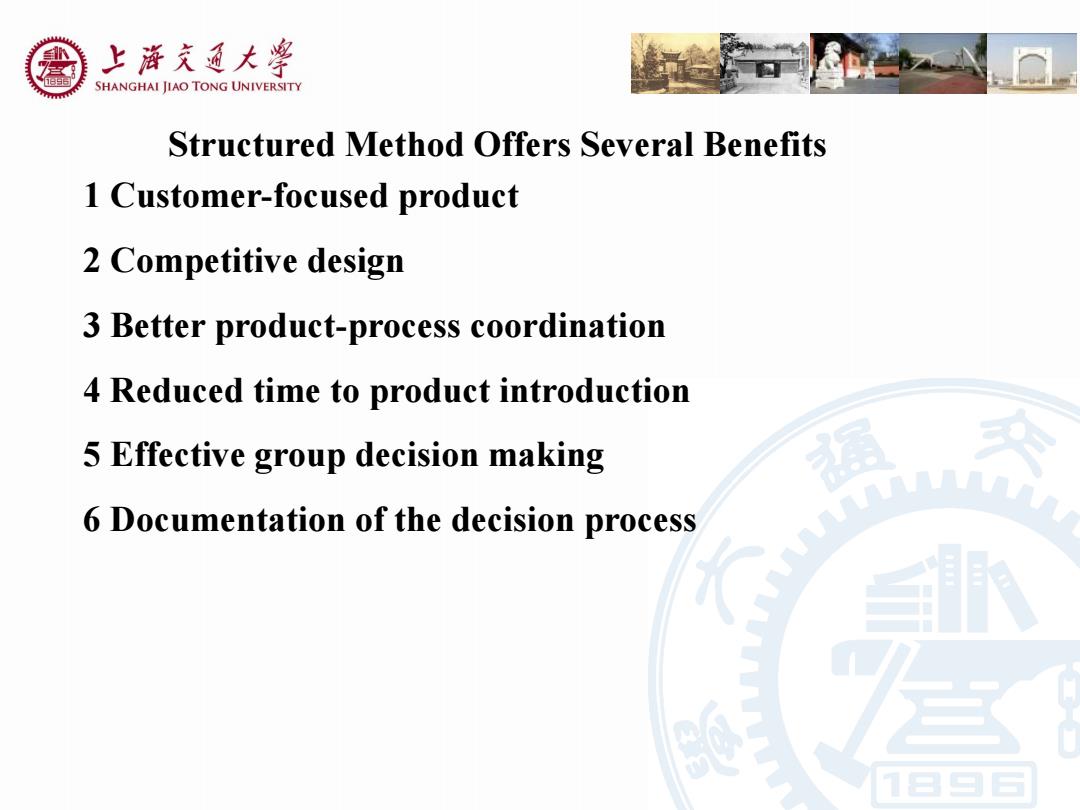
上游充通大 SHANGHAI JIAO TONG UNIVERSITY Structured Method Offers Several Benefits 1 Customer-focused product 2 Competitive design 3 Better product-process coordination 4 Reduced time to product introduction 5 Effective group decision making 6 Documentation of the decision process 及
Structured Method Offers Several Benefits 1 Customer-focused product 2 Competitive design 3 Better product-process coordination 4 Reduced time to product introduction 5 Effective group decision making 6 Documentation of the decision process
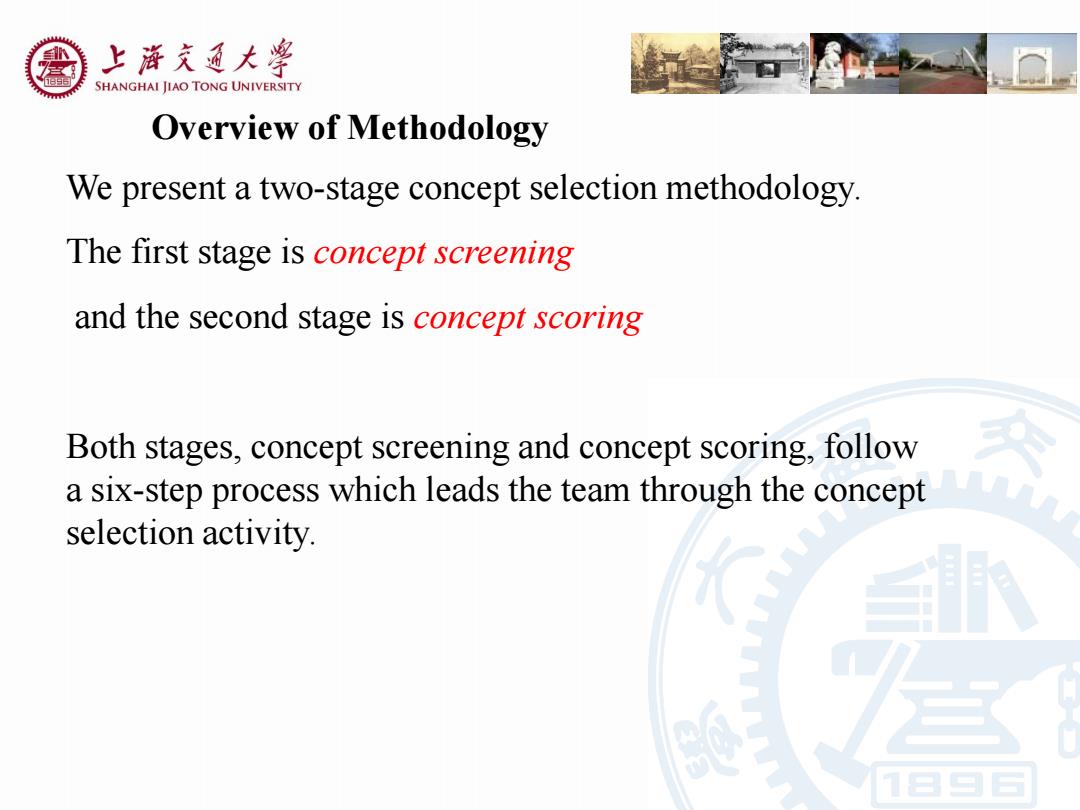
上游充通大¥ e SHANGHAI JIAO TONG UNIVERSITY Overview of Methodology We present a two-stage concept selection methodology. The first stage is concept screening and the second stage is concept scoring Both stages,concept screening and concept scoring,follow a six-step process which leads the team through the concept selection activity
Overview of Methodology We present a two-stage concept selection methodology. The first stage is concept screening and the second stage is concept scoring Both stages, concept screening and concept scoring, follow a six-step process which leads the team through the concept selection activity